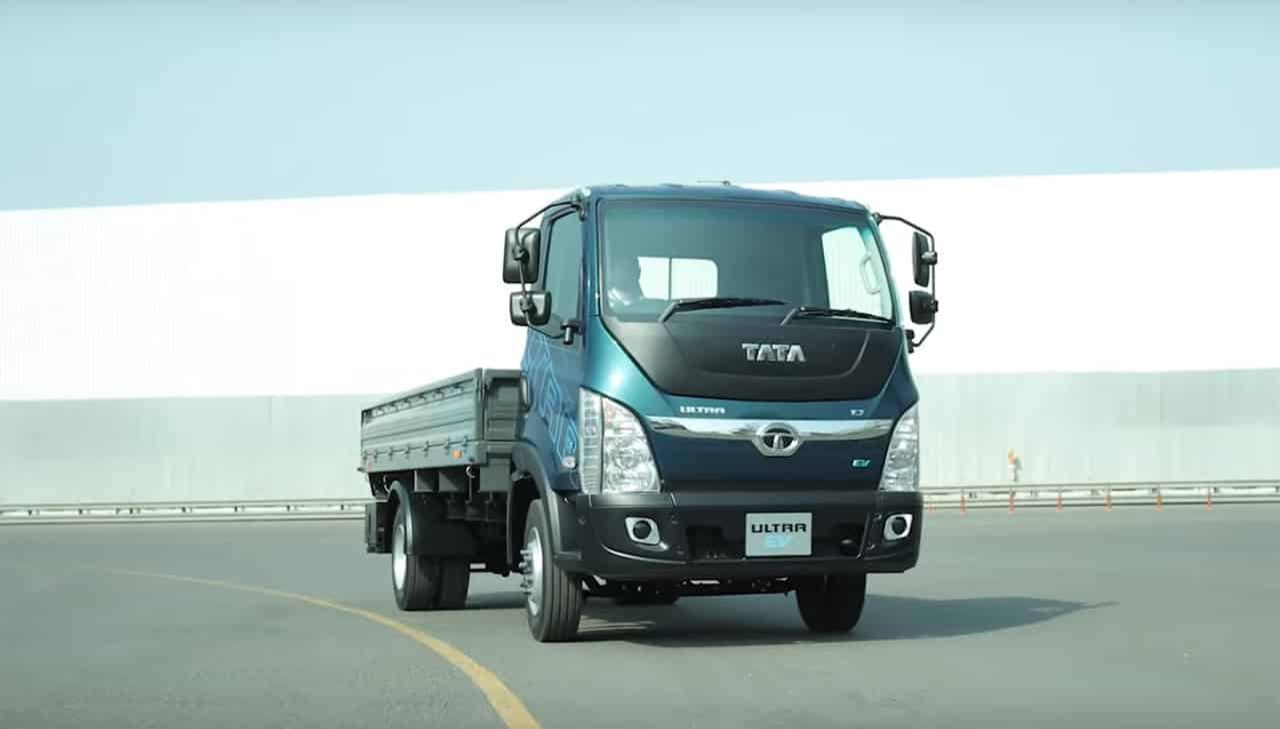India’s last-mile and mid-mile logistics ecosystem is entering a major transformation in 2025, driven by the rapid adoption of electric mini trucks. For decades, diesel and CNG trucks have been the backbone of urban and semi-urban goods movement. However, the increasing cost of fuel, rising maintenance expense, and the pressure to operate clean vehicles inside cities have pushed fleet owners toward electric trucks faster than expected.
This article offers the most detailed, practical, and real-world comparison between Electric Trucks and CNG Trucks based on technical specifications, running cost, maintenance, fuel efficiency, battery reliability, load-handling performance, and real fleet use cases.
The comparison includes all major Indian OEMs:
- Tata Ace EV
- Mahindra Treo Zor & Zor Grand
- Eicher Electric (2025 Launch)
- Ashok Leyland MoDo / EDGE EV
- Euler Motors HiLoad EV
- Altigreen neEV High Deck
- Piaggio Ape Electric
- CNG Mini Trucks like Tata Ace CNG, Mahindra Jeeto CNG, Piaggio CNG Ape, Ashok Leyland DOST CNG
Technical Difference Between Electric and CNG Mini Trucks
Electric trucks use a Permanent Magnet Synchronous Motor or BLDC motor, which delivers instant torque from 0 RPM. This makes the vehicle extremely responsive in congested city roads where stop-and-go traffic is common. In contrast, CNG trucks use a spark-ignition internal combustion engine, requiring higher RPM to produce torque. This leads to more gear changes, slower pick-up, and increased fuel consumption when fully loaded.
EVs transmit power through a single-speed transmission, which means no clutch, no gear shifts, no gearbox, and no associated wear and tear. CNG engines work through a multi-gear mechanical transmission that requires regular clutch and gearbox maintenance.
Electric trucks also offer regenerative braking, allowing them to recover 10–20% of energy during braking, especially in urban environments. CNG vehicles lack any form of energy recovery, resulting in higher operational cost.
Price Comparison – Electric vs CNG Mini Trucks (2025 On-Road Approx.)
Below is the updated on-road pricing comparison for EV and CNG trucks:
| Brand & Model | Electric On-Road Price | CNG On-Road Price | Official Website |
|---|---|---|---|
| Tata Ace | ₹9.2–9.6 lakh | ₹6.0–6.5 lakh | https://www.tatamotors.com/ |
| Mahindra | ₹3.5–3.9 lakh (Treo Zor) | ₹5.0–5.5 lakh (Jeeto CNG) | https://www.mahindraelectricautomobile.com/ |
| Piaggio Ape | ₹3.2–3.7 lakh | ₹2.5–2.9 lakh | https://www.piaggio.co.in/ |
| Altigreen neEV | ₹3.6–4.0 lakh | — | https://altigreen.com/ |
| Euler HiLoad EV | ₹3.8–4.2 lakh | — | https://www.eulermotors.com/ |
| Eicher Electric (2025) | ₹10–12 lakh | ₹11–12 lakh (Pro 2049 CNG) | https://www.eichertrucksandbuses.com/ |
| Ashok Leyland | ₹9–11 lakh (MoDo / EDGE EV) | ₹8–8.5 lakh (DOST CNG) | https://www.ashokleyland.com/ |
Running Cost Comparison (EV vs CNG vs Diesel)
Electric Truck Running Cost (2025):
- Average consumption: 9–12 kWh per 100 km
- Electricity price (commercial): ₹9–₹12 per unit
- Cost per km: ₹0.90 – ₹1.20
CNG Mini Truck Running Cost:
- CNG price: ₹78–₹92/kg
- Mileage: 22–28 km/kg
- Cost per km: ₹3.0 – ₹4.2
Diesel Mini Truck Running Cost:
- Diesel price: ₹88–99/litre
- Mileage: 12–15 km/litre
- Cost per km: ₹5.5 – ₹8
Cost Per KM – Full Table
| Fuel Type | Cost per km |
|---|---|
| Electric | ₹0.9 – ₹1.2/km |
| CNG | ₹3 – ₹4.2/km |
| Diesel | ₹5.5 – ₹8/km |
👉 Electric trucks are 3–4 times cheaper than CNG
👉 Electric trucks are 6–7 times cheaper than diesel
Maintenance Cost Comparison (Annual)
Electric vehicles do not require engine oil, clutch plates, spark plugs, fuel filters, or gearbox maintenance. CNG trucks require frequent servicing due to mechanical complexity.
| Component | EV Mini Trucks | CNG Mini Trucks |
|---|---|---|
| Engine Oil | Not required | Yes (₹4,000/year) |
| Clutch | No clutch | ₹5,000–7,000 |
| Gearbox | None | Yes |
| Filters | Minimal | Yes |
| Annual Maintenance | ₹3,000–₹6,000 | ₹18,000–₹28,000 |
Charging Time vs Refueling Time
Electric trucks take longer to charge, but opportunity charging and fast charging reduce downtime significantly.
| Type | Time Required |
|---|---|
| CNG refueling | 12–20 minutes |
| EV Slow Charging | 2.5 – 4 hours |
| EV Fast Charging | 45 – 80 minutes |
| Battery Swapping (Euler/Altigreen tie-ups) | 5 – 10 minutes |
Real-World Fleet Performance Comparison
Electric mini trucks provide better low-speed torque, smoother acceleration under load, and consistent performance even in heavy traffic. CNG trucks perform better on semi-urban roads and longer routes where charging is unavailable.
| Parameter | EV Mini Trucks | CNG Mini Trucks |
|---|---|---|
| Low-speed torque | Excellent | Moderate |
| Pick-up with load | Strong | Slower |
| Hill climbing | Better | Moderate |
| Ideal terrain | Urban traffic | Rural/semi-urban |
| Daily running | 40–120 km | 80–180 km |
5 Real Fleet Scenarios (Detailed Operational Analysis)
1. E-Commerce Deliveries (Amazon, Flipkart, Shadowfax)
Electric trucks perform exceptionally well due to frequent braking, start-stop cycles, and short travel distances. Regenerative braking adds 8–12% range, significantly reducing energy consumption.
2. FMCG & Grocery (Blinkit, Zepto, BigBasket)
These operations involve repetitive routes, short distances, and multiple loading points. EVs reduce operational expenses by 70–80% and maintain consistent delivery schedules.
3. Rural Inter-City Deliveries (60–120 km)
CNG trucks are still preferred due to fuel availability and extended range. Until highway EV chargers grow, CNG trucks remain more practical for rural markets.
4. Manufacturing Plant Internal Logistics
Electric trucks are the best choice since they eliminate engine noise, reduce idle fuel consumption, and offer exceptionally low cost per km.
5. Cold Chain & Perishable Goods
EVs are ideal for shorter cold chain routes. CNG is better when the route exceeds 100–150 km per day without access to fast chargers.
Brand-Wise Technical Summary (With Links)
Tata Ace EV
-
Tata Ace EV
-
Range: 80–100 km
-
Payload: 600–650 kg
-
Cost/km: ₹1.1
Best Use: Groceries, courier, FMCG
Winner: EV for city routes
-
- Official Link: https://www.tatamotors.com/
Mahindra Treo Zor / Zor Grand
-
-
Range: 90–120 km
-
Payload: 400–450 kg
Best Use: Last-mile deliveries
Winner: EV for high-stop operations
-
- Official Link: https://www.mahindraelectricautomobile.com/
Euler Motors HiLoad EV
-
-
Massive 110–120 km real range
-
688 kg payload
Best Use: High-load urban operations
Winner: EV
-
- Official Link: https://www.eulermotors.com/
Altigreen neEV
-
-
Best-in-class range 120–150 km
-
550–650 kg payload
Winner: EV for medium routes
-
- Official Link: https://altigreen.com/
Piaggio Ape Electric
- Affordable entry EV
Winner: EV for local distribution - Best suited for micro logistics
Official Link: https://www.piaggio.co.in/
Ashok Leyland MoDo / EDGE EV
- High durability
- Good for structured fleet operations
Official Link: https://www.ashokleyland.com/
Eicher Electric (2025 forthcoming)
- Strong LCV platform
- Expected powerful battery pack
Official Link: https://www.eichertrucksandbuses.com/
Profitability Comparison: Monthly & Yearly Savings
Assuming 80 km/day × 30 days = 2400 km/month
Electric Truck:
2400 km × ₹1/km = ₹2,400/month
CNG Truck:
2400 km × ₹3.8/km = ₹9,120/month
Net Monthly Savings:
➡ ₹6,720 per truck
Yearly Savings:
➡ ₹80,000+ per truck
For a fleet of 10 trucks:
➡ ₹8 lakh yearly savings
Final Conclusion — Which One Should Fleet Owners Choose in 2025?
- For city logistics, electric trucks provide unbeatable economics with 70–80% lower running cost, faster ROI, and far better driving experience.
- For semi-urban and rural operations, CNG trucks are practical until fast chargers expand outside metro cities.
- For operations with stop-and-go driving, regenerative braking gives EVs a huge advantage.
- For longer routes without charging, CNG remains the preferred fuel.
Overall, EVs deliver the highest profitability in 2025 for all urban and peri-urban fleet operations.






